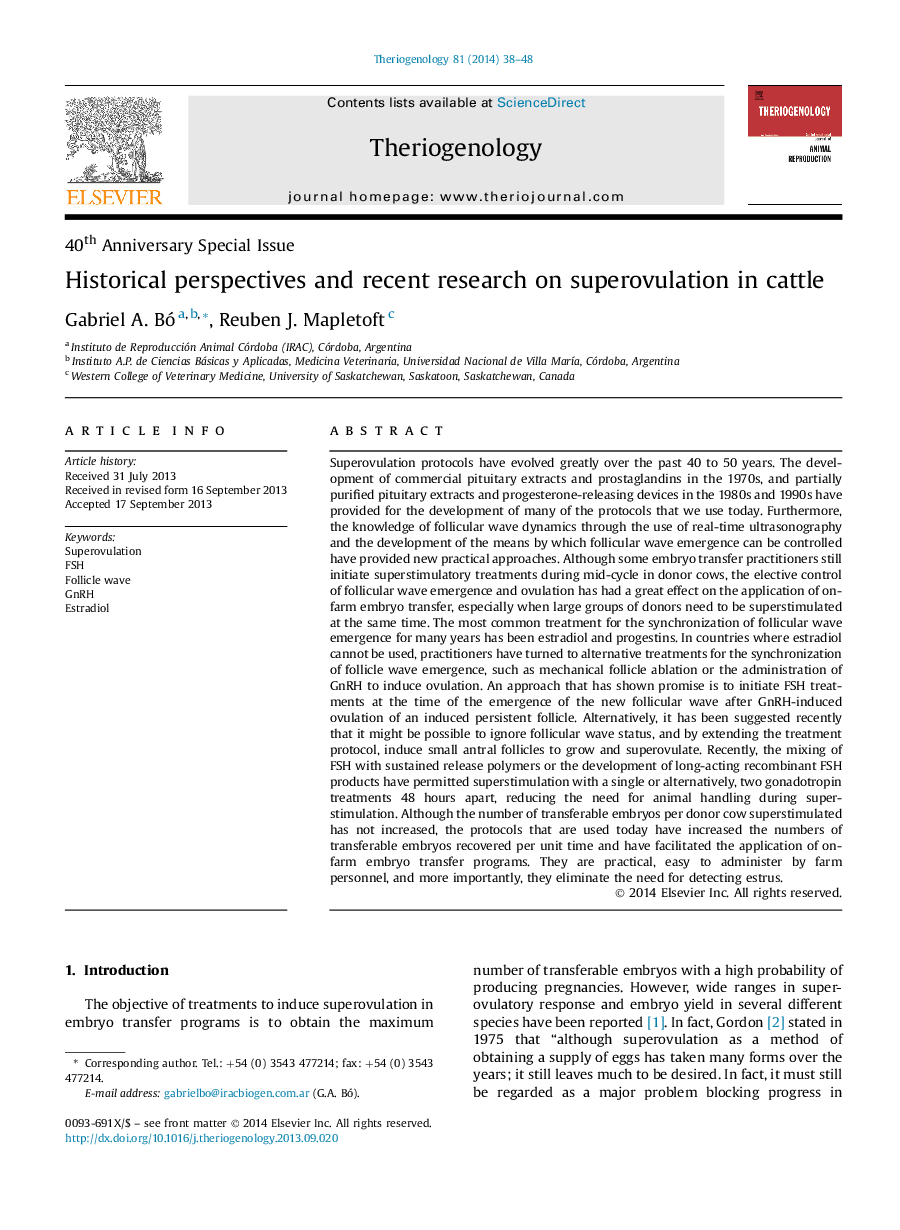| کد مقاله | کد نشریه | سال انتشار | مقاله انگلیسی | نسخه تمام متن |
|---|---|---|---|---|
| 2095283 | 1082093 | 2014 | 11 صفحه PDF | دانلود رایگان |
Superovulation protocols have evolved greatly over the past 40 to 50 years. The development of commercial pituitary extracts and prostaglandins in the 1970s, and partially purified pituitary extracts and progesterone-releasing devices in the 1980s and 1990s have provided for the development of many of the protocols that we use today. Furthermore, the knowledge of follicular wave dynamics through the use of real-time ultrasonography and the development of the means by which follicular wave emergence can be controlled have provided new practical approaches. Although some embryo transfer practitioners still initiate superstimulatory treatments during mid-cycle in donor cows, the elective control of follicular wave emergence and ovulation has had a great effect on the application of on-farm embryo transfer, especially when large groups of donors need to be superstimulated at the same time. The most common treatment for the synchronization of follicular wave emergence for many years has been estradiol and progestins. In countries where estradiol cannot be used, practitioners have turned to alternative treatments for the synchronization of follicle wave emergence, such as mechanical follicle ablation or the administration of GnRH to induce ovulation. An approach that has shown promise is to initiate FSH treatments at the time of the emergence of the new follicular wave after GnRH-induced ovulation of an induced persistent follicle. Alternatively, it has been suggested recently that it might be possible to ignore follicular wave status, and by extending the treatment protocol, induce small antral follicles to grow and superovulate. Recently, the mixing of FSH with sustained release polymers or the development of long-acting recombinant FSH products have permitted superstimulation with a single or alternatively, two gonadotropin treatments 48 hours apart, reducing the need for animal handling during superstimulation. Although the number of transferable embryos per donor cow superstimulated has not increased, the protocols that are used today have increased the numbers of transferable embryos recovered per unit time and have facilitated the application of on-farm embryo transfer programs. They are practical, easy to administer by farm personnel, and more importantly, they eliminate the need for detecting estrus.
Journal: Theriogenology - Volume 81, Issue 1, 1 January 2014, Pages 38–48
